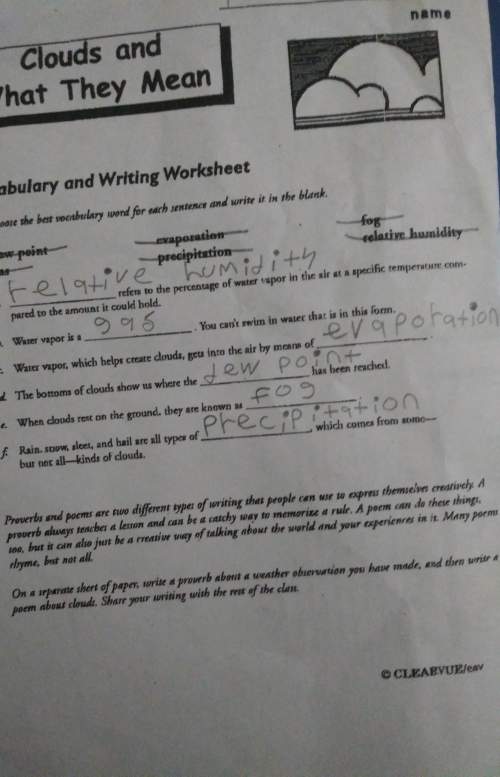
Physics, 14.10.2019 16:00 actheorian8142
A65-kg ice skater moving to the right with a velocity of 2.50m/s throws a .150kg snowball to the right with a velocity of 32.0m/s relative to the ground
a) what is the velocity of the ice skater after throwing the snowball?
b) a second skater initially at rest with a mass of 60kg catches the snowball. what is the velocity of the second skater after catching the snowball?

Answers: 1


Another question on Physics

Physics, 22.06.2019 18:30
4. now look at the green lines you created by connecting the three boiling point data points and the three melting point data points. for each of these lines, describe any trends you see. 5. locate the elements on your periodic table that you circled in green on your graph. what term or description would you use to identify these elements with respect to the periodic table? 7. using the room temperature line (orange line) and your periodic table, make lists that identify the state of matter (gas, liquid, or solid) in which each element you plotted exists at room temperature. explain your answers.
Answers: 2

Physics, 22.06.2019 21:00
Aflask with vinegar in it has a mass of 160 grams. a balloon with baking soda in it has a mass of 40 grams. the balloon is attached to the flask to seal the opening and the vinegar and baking soda mixes. the balloon inflates to a large volume. what will the total mass of the balloon and flask be after the balloon inflates? explain. a) less than 200 grams because the solid baking soda disappears. b) 200 grams, because all the atoms remain in the balloon or flask. c) more than 200 grams because the size of the balloon is so much larger. d) less than 200 grams because gases such as the one in the balloon are lighter than solids and liquids.
Answers: 1

Physics, 22.06.2019 22:30
Suppose that three astronomical objects, 1, 2, and 3 are observed to lie on a line, and the distance from object 1 to object 3 is d. object 1 has four times the mass of object 3, and seven times the mass of object 2. find the distance between objects 1 and 2 for which the net force on object 2 is zero.
Answers: 1

Physics, 23.06.2019 05:00
Scientists discovered fossils in several layers of the earth you see here. they found fossils of algae, snails, and clams in layer d. given that information, where do you think they found fossil evidence of simple land plants and amphibians?
Answers: 2
You know the right answer?
A65-kg ice skater moving to the right with a velocity of 2.50m/s throws a .150kg snowball to the rig...
Questions

Mathematics, 27.09.2019 01:40




English, 27.09.2019 01:40



History, 27.09.2019 01:40

Social Studies, 27.09.2019 01:40


English, 27.09.2019 01:40

English, 27.09.2019 01:40


English, 27.09.2019 01:40



Mathematics, 27.09.2019 01:40


English, 27.09.2019 01:40




